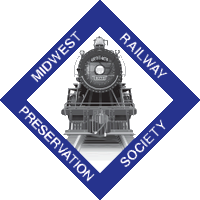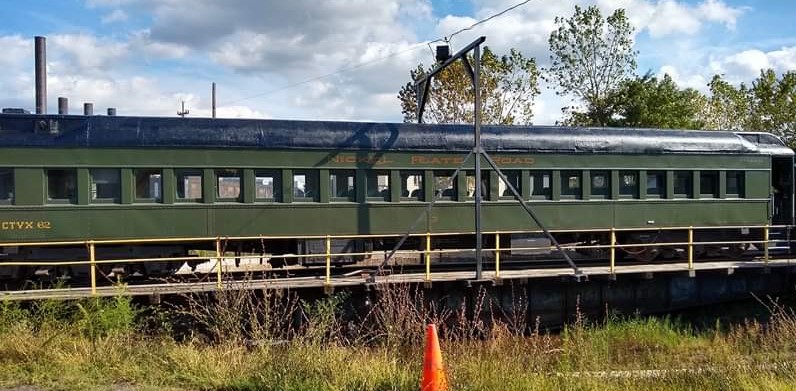With the exception of Grand Trunk Western 4070, probably the most asked about piece of equipment in Midwest Railway Preservation Society’s possession is our vintage Pullman heavyweight passenger car, the former Nickel Plate Railroad 62, sometimes referred to as “The Death Car”.
The car, featured in many different cable TV network broadcasts, is said to be haunted and quite a few paranormal groups and “ghost hunters” have visited the roundhouse and researched the spirits that still “appear” periodically to volunteers and visitors alike. Day or night, it doesn’t seem to make a difference when they may be seen or felt.
Although the car has been in Midwest’s possession for a long time, it was built by Pullman in 1934 and ran in service to the Nickel Plate Railroad until 1960 when it was retired in Cleveland and subsequently purchased by the Midwest Railway Historical Society. During the 1940’s, 62 was part of the Lackawanna Limited which ran between Hoboken, New Jersey and Buffalo, New York.
The story begins on a hot summer day in 1943. The date was August 30th, the weather was clear, and the car was the sixth in line of an eleven-car westbound run through New York on its’ way to Buffalo. The Limited was pulled by engine 1151 and the passenger consist was made up of a mail-baggage car, two Pullman sleeping cars, four coaches, a dining car and three more coaches. Running about twenty minutes behind schedule and trying to make up time, the Lackawanna Limited was clocking around 80 miles per hour. When built in 1934, 62 was not fitted with air conditioning although it was later added in 1937. On this day, however, most of the windows of the cars were wide open taking advantage of the wind through the windows to cool the interiors. There were more than 500 passengers aboard the train.
At about 4:30 pm, a westbound freight train consisting of thirteen cars and a caboose and pulled by engine 1248 stopped clear of the main track at Wayland, New York. During switching operations, the engine had moved six cars westward on the main track and had stopped with the engine fouling the westward main track. The time was 5:23 pm.
Meanwhile, the Lackawanna Limited, passenger train No. 3, passed the Cohocton, New York office a little over ten miles from Wayland at 5:10 pm and had made up about nine minutes. All signals displayed proceed but as the train approached Wayland, the engineer noticed the moving switcher on the siding and when he realized it was not stopping, he applied the emergency brakes. It was too late to avoid the collision. The train had slowed to about 50 miles per hour when 1151 collided with 1248 at 5:23 pm. 1248 was derailed to the north and stopped upright and in line with the track. The engine was badly damaged, and steam and water connections broken. Engine 1151 and its’ tender were also derailed and badly damaged stopping across the main track on its’ left side about 400 feet west of the point of collision. The first six cars of the Limited were derailed and considerably damaged. The sixth car (No. 62) stopped against engine 1248 and escaping steam and hot water from the engine entered the car through the open windows under pressure and was the cause of the majority of fatalities.
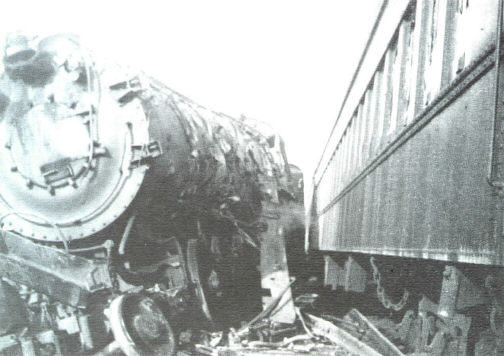
A supervisor of locomotive operations for the railroad was riding in the cab of 1151 and was killed. The engineer, the fireman, the baggageman and brakeman were injured in the crash. Eighteen passengers died at the scene of the accident while eleven more died at various hospitals after being transported following the collision. The youngest fatality was a five-year old girl from Cleveland, Ohio while the oldest was an eighty-six-year-old woman from Painted Post, New York.
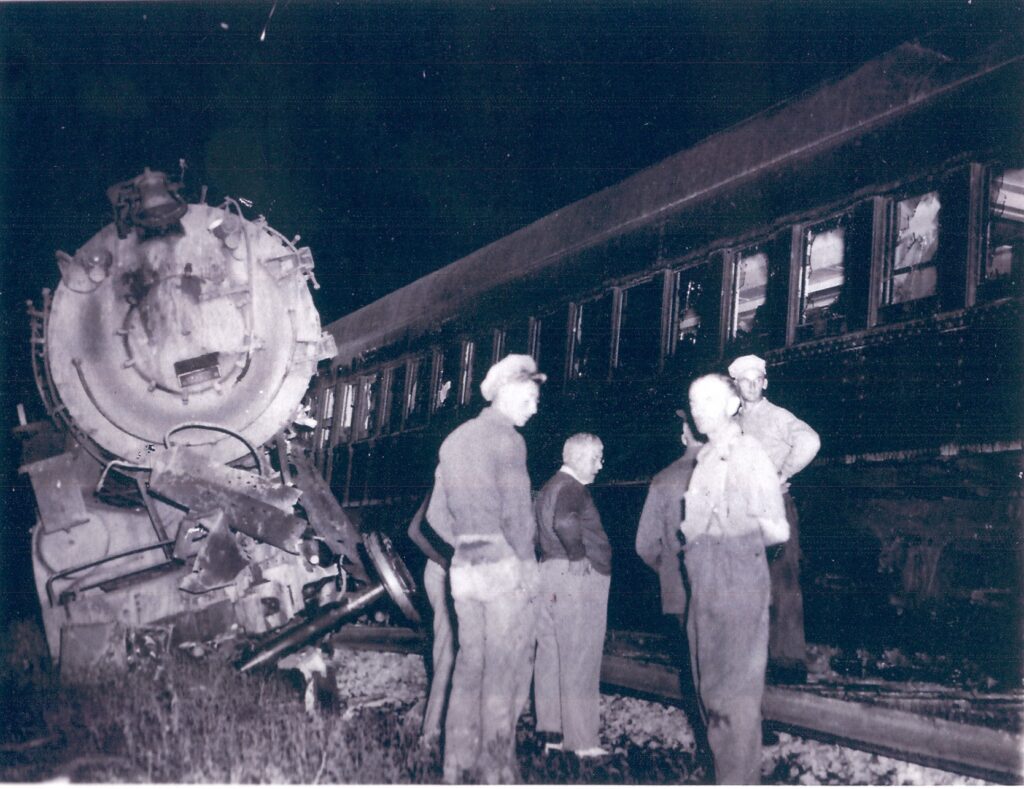
An inquest was opened by The Interstate Commerce Commission in Washington, D.C. as Investigation No. 2725. Concluded on October 16, 1943, it was determined that “the accident was caused by failure of operating officers of the Delaware, Lackawanna & Western Railroad Company to adhere to and enforce operating rules which are essential to safety.” Although declaring that negligence to provide adequate safety facilities was the cause, the coroner concluded that no useful purpose would be served by recommending criminal action.
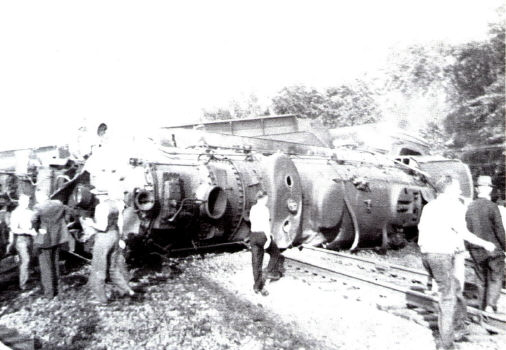
Most of the cars damaged during the accident were repaired and put back into service, including No. 62 which eventually was sold in 1960 to the Midwest Railway Historical Foundation (the predecessor of Midwest Railway Preservation Society) for $500. Used for excursion service including runs through the Cuyahoga Valley National Park on the Cuyahoga Valley Line through 1991, the car is housed at the Historic B&O Roundhouse in Cleveland, Ohio and is still available for lease, used for excursion service and can be toured at the roundhouse when not in service. It was recently leased to a film production company that used it during filming of “Women of the Movement”, an ABC mini-series in which it appeared in the first episode under the Illinois Central banner.
Numerous incidents have been shared over the years by volunteers at work in and around the car, that have no explanation; open windows suddenly slamming shut, momentary rushes of cold air and the feeling of a hand on someone’s shoulder even though the person is the only one on the car. People have reported seeing other people in period “costumes” on board even though again there was nobody else present. Paranormal societies have reported “talking to the dead” through their vast arrays of specialized instruments, with some having television hook-ups.
Real, or imagined, many visitors to the “death car” have changed their opinions of supernatural phenomenon.
Written by: Ken Yandek
References for this article:
Investigation No. 2725, The Interstate Commerce Commission
The Wreck of the Lackawanna Limited at Wayland, New York on August 30, 1943 by the Painted Hills Genealogy Society
Archives, Midwest Railway Preservation Society
